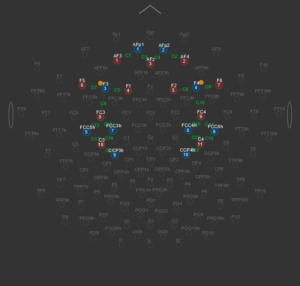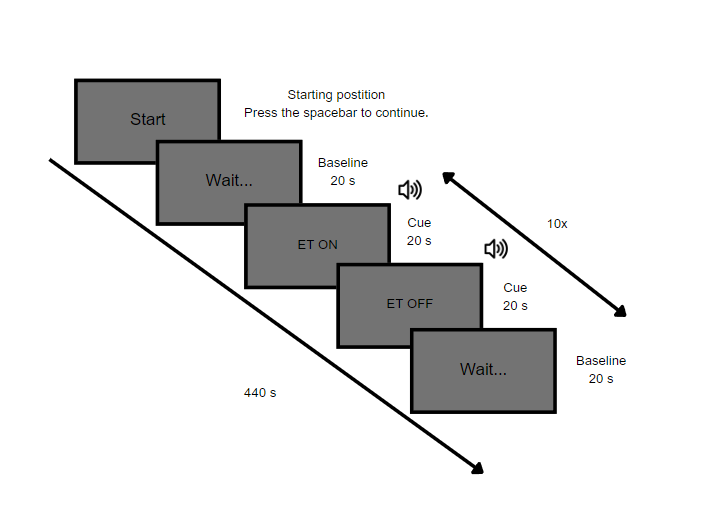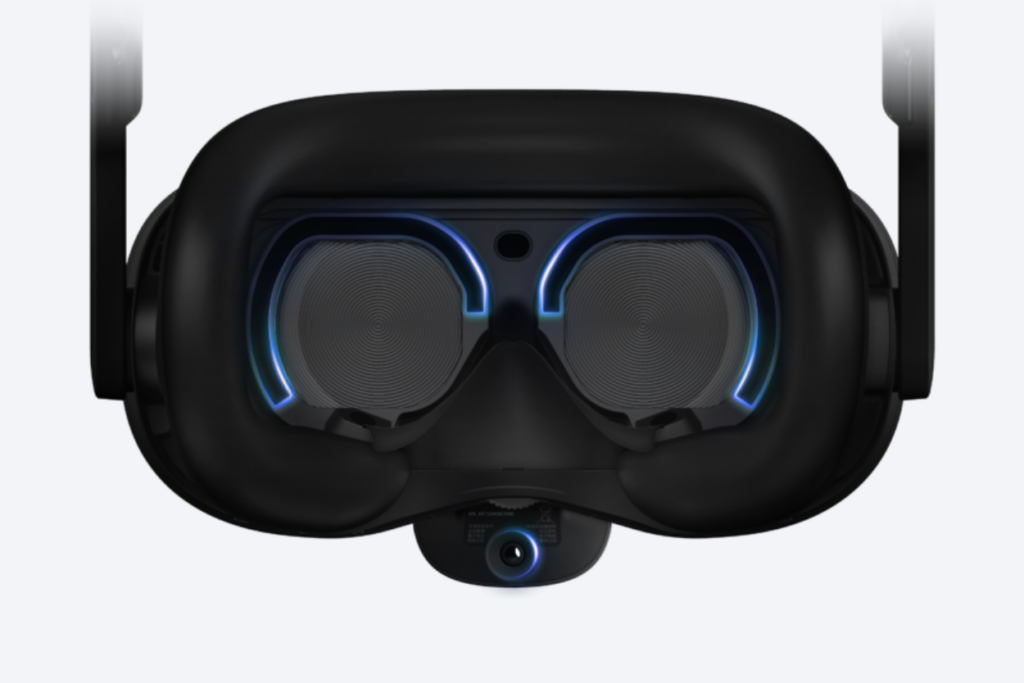The HTC VIVE Focus As a part of the complete integration of the goggles with the built-in eye tracker in our Photon Cap device. It has a dual-camera system with IR support to capture the direction and origin of pupil size and position, as well as eye dilation. This will enhance the realism of virtual reality and improve communication through sight, adding to the excitement of natural human interactions.
We designed the study to test whether the infrared light emitted from the eye tracker module would interfere with the hemodynamic measurement recorded on the surface of the skull by fNIRS detectors.

Participants
Ten volunteers participated in our study (5 women, age M = 22, SD = 6.23). All of them had normal or corrected vision and reported no current or previous neurological or psychiatric conditions.
Materials
The hemodynamic signals were recorded on two wavelengths (760 and 850 nm) using the continuous-wave Photon Cap C20 System (Cortivision sp. z.o.o., Lublin, Poland) with 16 LED sources and 10 SPiD detectors. The cap montage resulted in 22 channels (20 long channels and 2 short-distance channels) placed bilaterally over the motor and prefrontal cortex. The textile light blocker was placed over the optodes to reduce noise from the external light. The experimental procedure was designed and controlled using PsychoPy, version v2021.2.3

Procedure
The procedure began and ended with a 20-sec rest block (rest block), used to determine the baseline hemodynamic activity. Then the subject in VR switched the eye tracker on or off using a controller in the setting, after hearing a sound, corresponding to a specific action. Each of these blocks lasted 20 seconds. The number of repetitions for the on and off blocks was 10. The entire procedure lasted 440 seconds.
Results
We compared the differences in hemodynamic response (average HbO/HbR concentration changes) during the resting state under active infrared emission (ON) and with the eyetracking module off (OFF). In the statistical analyses using repeated-measured ANOVA, we included three factors. IR EMISSION (ON vs. OFF), CHROMOPHORE (HbO/HbR), and CHANNEL (22 locations). There were no statistically significant main effects, or interactions between factors observed: IR EMISSION F(1,19) = 9.008, p = 0.205; CHROMOPHORE F(1,19) = 0.799, p = 0.536, and CHANNEL F(1,19) = 0.937, p = 0.556. Moreover, the additional analysis performed in Bayesian repeated-measured ANOVA model (IR EMISSION BF10 = 0.178) leads us to conclude that the hemodynamic response did not differ according to the IR emission from the eyetracking module.
The HTC VIVE Focus 3 all-in-one goggles are part of our flagship Cortivision Spotlight product. As a fully integrated VR+fNIRS technology ecosystem allows for a broad range of applications in movement science, neuroergonomics, or UX.
